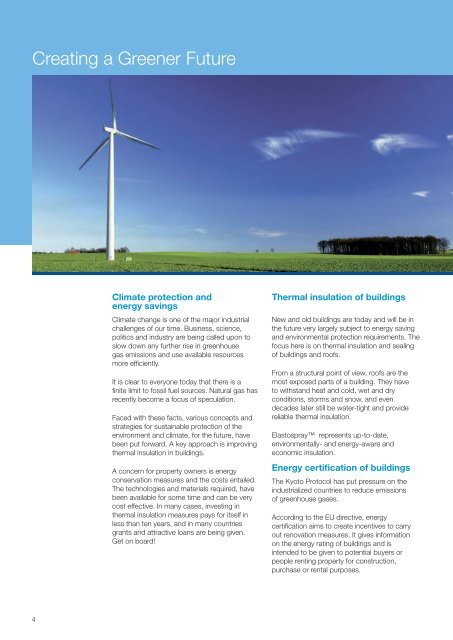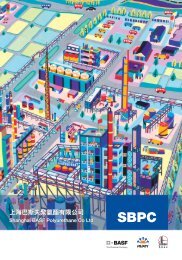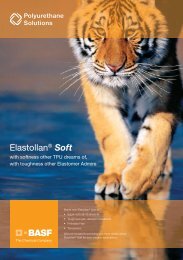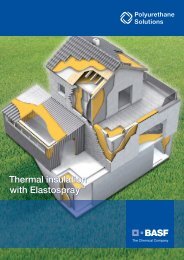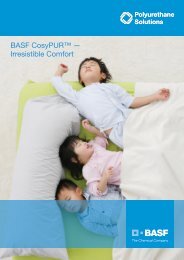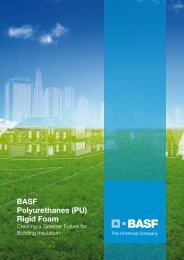Thermal insulation with Elastospray - BASF Polyurethanes Asia Pacific
Thermal insulation with Elastospray - BASF Polyurethanes Asia Pacific
Thermal insulation with Elastospray - BASF Polyurethanes Asia Pacific
You also want an ePaper? Increase the reach of your titles
YUMPU automatically turns print PDFs into web optimized ePapers that Google loves.
Creating a Greener Future<br />
Climate protection and<br />
energy savings<br />
Climate change is one of the major industrial<br />
challenges of our time. Business, science,<br />
politics and industry are being called upon to<br />
slow down any further rise in greenhouse<br />
gas emissions and use available resources<br />
more efficiently.<br />
It is clear to everyone today that there is a<br />
finite limit to fossil fuel sources. Natural gas has<br />
recently become a focus of speculation.<br />
Faced <strong>with</strong> these facts, various concepts and<br />
strategies for sustainable protection of the<br />
environment and climate, for the future, have<br />
been put forward. A key approach is improving<br />
thermal <strong>insulation</strong> in buildings.<br />
A concern for property owners is energy<br />
conservation measures and the costs entailed.<br />
The technologies and materials required, have<br />
been available for some time and can be very<br />
cost effective. In many cases, investing in<br />
thermal <strong>insulation</strong> measures pays for itself in<br />
less than ten years, and in many countries<br />
grants and attractive loans are being given.<br />
Get on board!<br />
<strong>Thermal</strong> <strong>insulation</strong> of buildings<br />
New and old buildings are today and will be in<br />
the future very largely subject to energy saving<br />
and environmental protection requirements. The<br />
focus here is on thermal <strong>insulation</strong> and sealing<br />
of buildings and roofs.<br />
From a structural point of view, roofs are the<br />
most exposed parts of a building. They have<br />
to <strong>with</strong>stand heat and cold, wet and dry<br />
conditions, storms and snow, and even<br />
decades later still be water-tight and provide<br />
reliable thermal <strong>insulation</strong>.<br />
<strong>Elastospray</strong> represents up-to-date,<br />
environmentally- and energy-aware and<br />
economic <strong>insulation</strong>.<br />
Energy certification of buildings<br />
The Kyoto Protocol has put pressure on the<br />
industrialized countries to reduce emissions<br />
of greenhouse gases.<br />
According to the EU directive, energy<br />
certification aims to create incentives to carry<br />
out renovation measures. It gives information<br />
on the energy rating of buildings and is<br />
intended to be given to potential buyers or<br />
people renting property for construction,<br />
purchase or rental purposes.<br />
4


